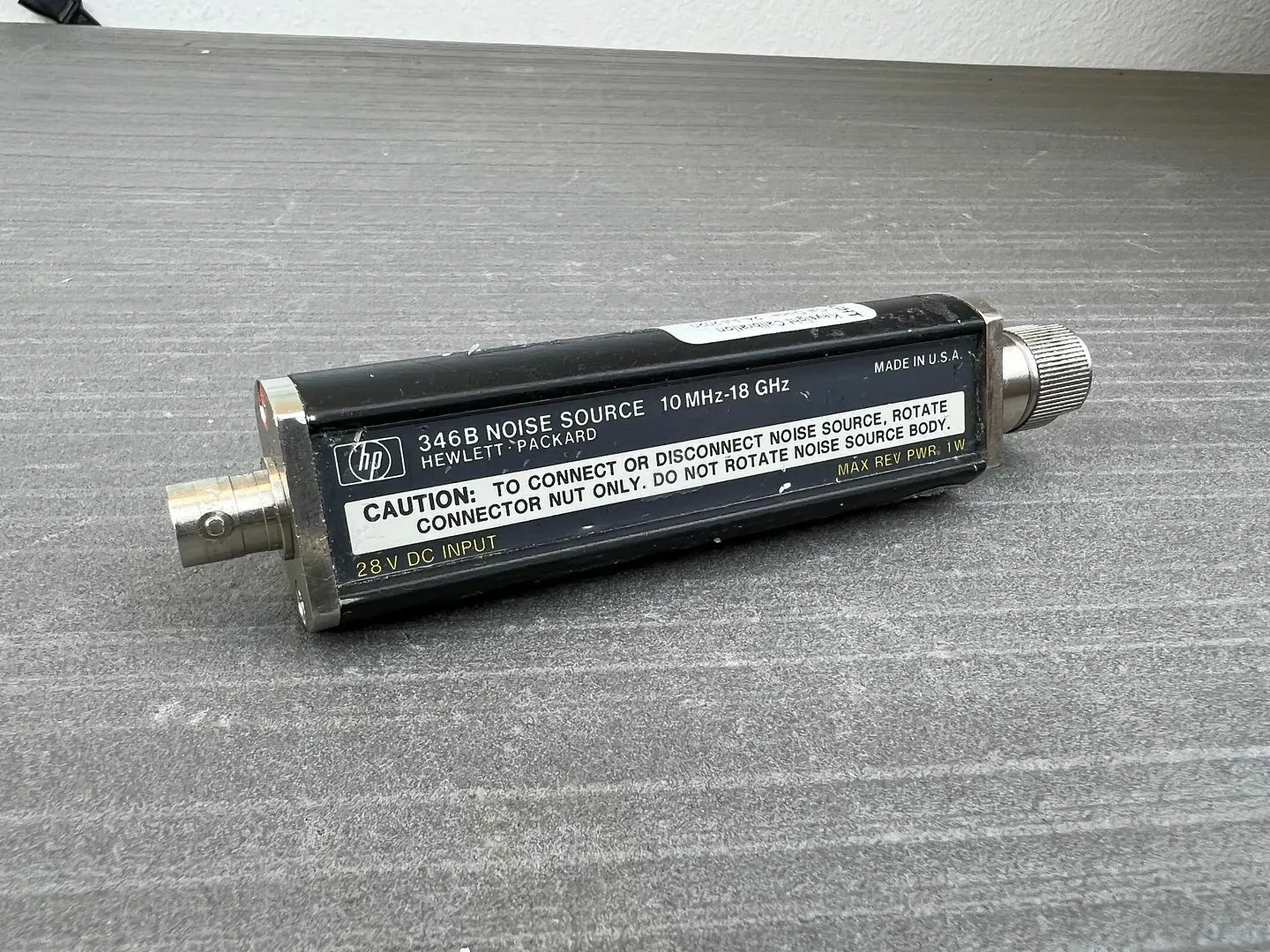When it comes to wireless communication systems, the performance of a radio receiver is crucial. One of the key parameters that determines the performance is the noise figure or noise factor. In this article, we will delve into the details of noise figure measurement and explore three different methods. Specifically, we will focus on the Hewlett Packard 346B noise source and how it can be utilized in noise figure measurement.
Noise Figure and Noise Factor
Noise figure (NF) and noise factor (F) are closely related and are used to specify the noise performance of an RF system. The noise figure is a logarithmic measure of the amount of noise added by a component or system, while the noise factor is the ratio of the signal-to-noise ratio at the input to the signal-to-noise ratio at the output.
Mathematically, the relationship between noise figure and noise factor is given by:
 NF = 10 * log10 (F)
NF = 10 * log10 (F)
The lower the value of the noise figure, the better the performance of the RF system. In the following sections, we will explore three different methods to measure the noise figure and discuss their advantages and limitations.
 Analyzing hewlett-packard (hpe) stock price: trends, factors, and analyst targets
Analyzing hewlett-packard (hpe) stock price: trends, factors, and analyst targetsUsing a Noise Figure Meter
The most straightforward method to measure the noise figure is by using a noise figure meter or analyzer. The Hewlett Packard 346B noise source can be employed in conjunction with a noise figure meter, such as the Agilent N8973A Noise Figure Analyzer. The setup involves generating a pulse signal to drive the noise source, which in turn drives the device under test (DUT). The output of the DUT is measured by the noise figure analyzer, which calculates and displays the noise figure internally.
The advantage of using a noise figure meter is its simplicity and accuracy. The analyzer can measure the noise figure over a certain frequency range and display the system gain along with the noise figure. However, it is important to note that noise figure meters have certain limitations, such as frequency range and accuracy when measuring high noise figures.
Gain Method
Another method to measure the noise figure is the gain method. This method involves more measurements and calculations but can be more convenient and accurate under certain conditions. The gain method is based on the noise factor definition, which is given by:
NF = P_NOUT - (-174dBm/Hz + 10 * log10 (BW) + Gain)
In this equation, P_NOUT is the measured total output noise power, -174dBm/Hz is the noise density of 290°K ambient noise, BW is the bandwidth of the frequency range of interest, and Gain is the system gain. By pre-determining the gain of the DUT and terminating the RF input with the characteristic impedance, the output noise power density can be measured with a spectrum analyzer.
 Hpe careers: professional growth opportunities at hewlett packard enterprise
Hpe careers: professional growth opportunities at hewlett packard enterpriseThe gain method provides flexibility in terms of frequency range, but it is limited by the noise floor of the spectrum analyzer. When the noise figure is low or high, the accuracy of the measurement can be compromised. However, for moderate noise figures, the gain method can be accurate and cost-effective.

Y Factor Method
The Y factor method is another popular approach to measure the noise figure. This method requires an Excess Noise Ratio (ENR) source, which is similar to the noise source used in the noise figure meter method. The setup involves turning the noise source on and off and measuring the change in the output noise power density with a spectrum analyzer.
The formula to calculate the noise figure using the Y factor method is:
NF = ENR/F + 1
 Hp - leading provider of technology products and services
Hp - leading provider of technology products and servicesIn this equation, ENR is the excess noise ratio specified by the ENR source, and F is the noise factor. By measuring the difference in the output noise power density when the noise source is on and off, the noise figure can be calculated.
The Y factor method is suitable for a wide frequency range, but it requires an ENR source and careful calibration. It can be accurate for moderate noise figures, but the accuracy may be compromised at low or high noise figures.
Summary
In this article, we have explored three different methods to measure the noise figure of RF devices, including the use of a noise figure meter, the gain method, and the Y factor method. Each method has its advantages and limitations, and the choice of method depends on the specific application and available equipment. The Hewlett Packard 346B noise source can be utilized in noise figure measurement using any of these methods, providing engineers with valuable insights into the noise performance of their RF systems.

